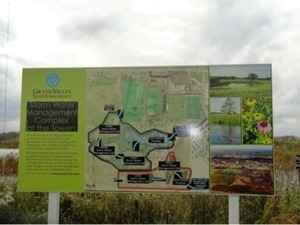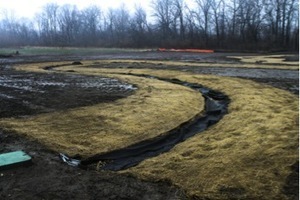Turning over a new LEEF: A look at the need for experiential environmental education and the creation of an education outreach program for ND-LEEF
- Student
- Kate Buczek
- College(s)
- College of Science
- Faculty Advisors
- Jennifer Tank and Brett Peters
- Class Year
- 2013
This project reviews possibilities for sustainability outreach to unite the University of Notre Dame with the South Bend community through the new facility ND-LEEF in terms of potential opportunities for ND-LEEF and suggestions for the best course of action for new potential outreach programs.
Education: The Root of Sustainability
In our modern world the rate at which over-consumption, consumerism, exponential human population growth, and technological advancements have been depleting the Earth’s resources is not only but alarming, but also tragic. Scientific evidence has proven the devastating effects on the environment because of these issues, so why aren’t we doing more to stop it?
We need to educate more people about these issues. Education is the root of sustainability, without the proper foundation, the sustainability initiatives fade away before the ideas are implemented. Education is the first step toward positive cultural change. Environmental education is a good place to start in order to foster sustainability. Promoting environmental education is important throughout an individual’s education:
- Primary education is a good place to start with environmental education because younger children have a tendency to be open to learning new ideas. Children partake in “free choice” learning where they learn because they desire to, not because they are forced to follow a curriculum.
- Secondary school students are more effective at bringing about local change and improvements. If they are educated about the environment they can actively work to improve the community.
- If a university incorporates being “green” into its classes and culture, students can work together at a higher level to think of solutions for environmental issues.
- Adult learners are often free choice learners and therefore very motivated to actively participate and make a difference about the environmental issues they are passionate about.
 Grand Valley State University Stormwater Runoff Wetlands Project
Grand Valley State University Stormwater Runoff Wetlands Project
Ways to make Environmental Education Effective
- Have teachers be guides rather than authority figures encouraging an exploratory atmosphere.
- Discover a program’s curriculum through nature and human experience opening the door to asking questions and a better understanding of the world in which we live.
- Incorporate ecology and sustainability into different disciplines aiming toward a shift away from materialism
- A strong community with "green" culture will reinforce the concepts learned in the classroom. Environmental education will be lost without this strong community framework consisting of governmental support, awareness, and members of society that care about their community.
Environmental Education Programs
- Grand Valley Wetlands Project
- University of California Sierra Nevada Aquatic Research
- St. Anthony Outdoor Lab at the University of Minnesota
- University of Mississippi biological station
- Savannah River Ecology Lab
- Murray State’s Hancock Lab
ND-LEEF
 Stream System at ND-LEEF (Still Under Construction)
Stream System at ND-LEEF (Still Under Construction)
The University of Notre Dame Linked Experimental Ecosystem Facility, an ecosystem study facility located at St. Patrick’s County Park in South Bend, Indiana, consists of constructed “watersheds” that are monitored and used to collect data as well as help to improve the water in the area. Its park location also ties Notre Dame to the community.
The program can expand to fill in the gaps in environmental education in high school and adult education. Professors or college students can lead summer camps or ecology weekends for high school students as well as adults to become more aware of the research being done. A good way to work closely with the community is to involve it into the research by teaming up with the Indiana Master Naturalist program. Overall, this program, working alongside St. Patrick’s County Park a plan of action can be developed to encourage work in sustainability.